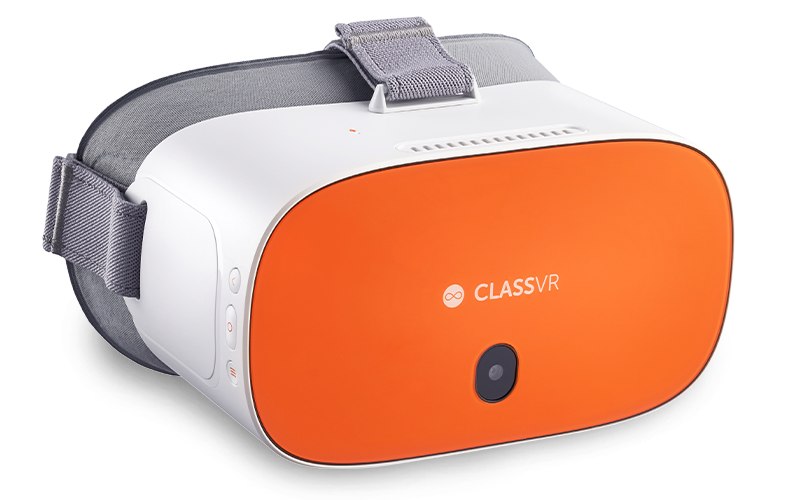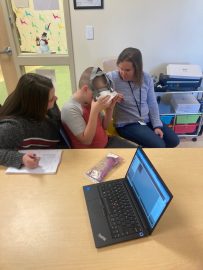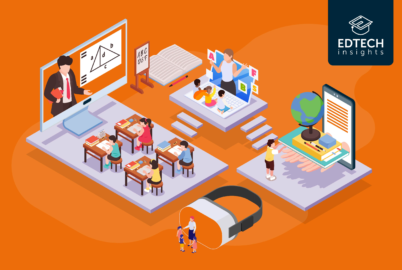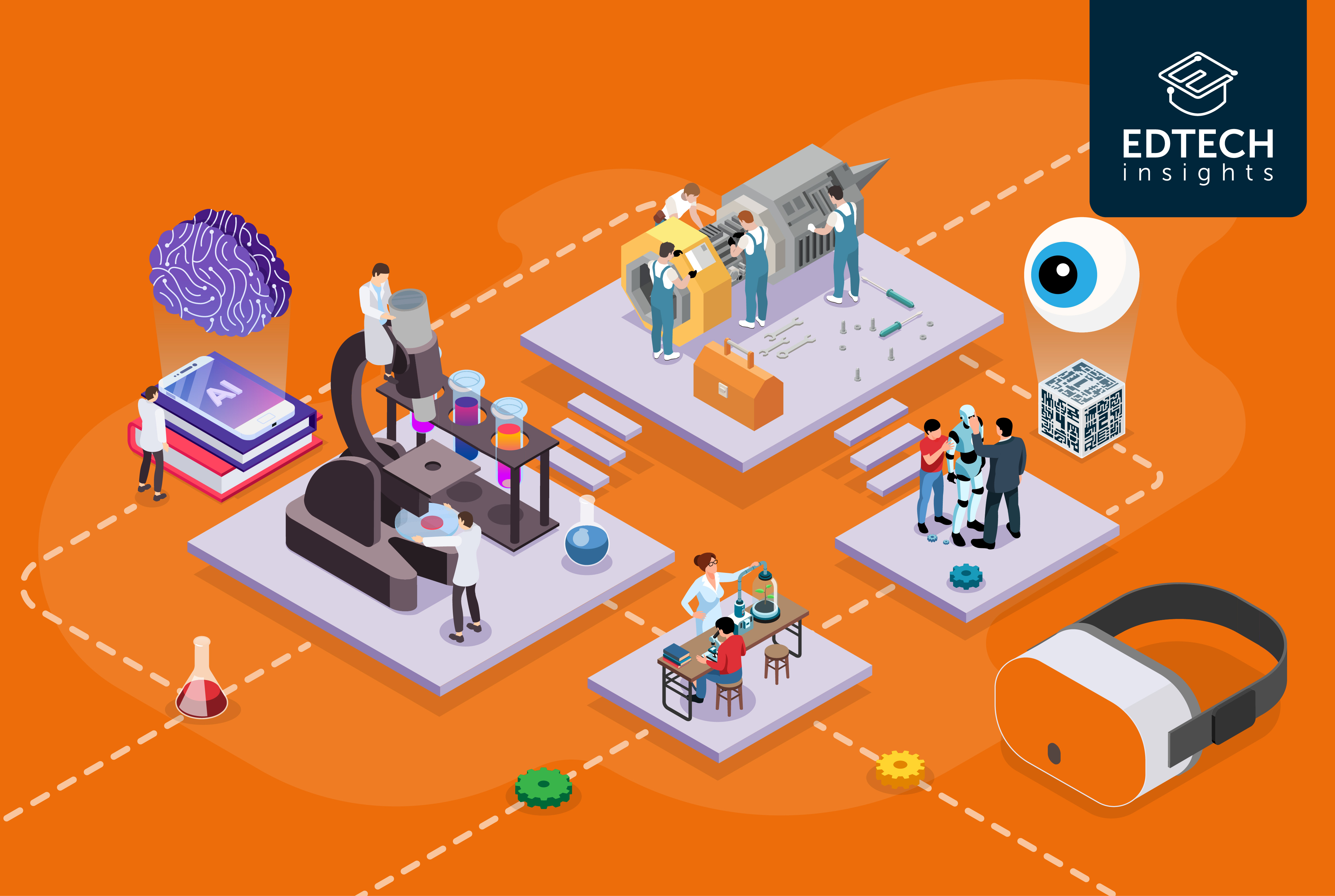
If you’ve heard of STEM labs, then you’ll know how they deliver a totally different and transformative approach to learning for science, technology, engineering and mathematics. STEM labs bring the power of project-based learning together with multidisciplinary activities to create an amazing boost to students’ skills of all kinds – including social-emotional ones.
You might also have heard how virtual reality is making waves in education. But how about augmented reality? This is another type of virtual learning – a blending of virtual and real environments.
In this article, we’ll discuss how augmented reality resources and activities can blend into and improve a STEM lab to increase learning and engagement for all students.
Table of contents
What is augmented reality (AR)?
While virtual reality learning takes students to an entirely different, simulated environment, augmented reality learning allows them to interact with 3D virtual objects while otherwise remaining in their real environment. It is suitable when students just need to focus on holding and manipulating objects, as covered in our guide to augmented reality.
Both virtual reality learning and augmented reality learning are excellent tools in STEM labs. To determine which is better for a specific activity, a key factor is whether the entire environment needs to be virtual. If an immersive experience isn’t needed and specific objects are the focus of the project or activity, an AR object like those from ClassVR might be perfect. The 3D objects created via augmented reality could be anything, ranging from a model of a human heart to an animal cell. Either way, students can hold, move, and manipulate the object to really understand it from every angle. Find out more in our blog post on the benefits of AR.
AR enables students to visualize abstract scientific concepts in a tangible way. For example, students can explore 3D models of molecules, planets, or complex mathematical equations, making it easier to grasp difficult concepts.
@Rocco_Avantis - Educational Specialist, Avantis Education
What is a STEM lab?
A STEM lab is a place where students can explore activities and tackle projects related to science, technology, engineering, and mathematics (STEM). Lab lessons are often interdisciplinary, but don’t have to be.
The main idea of the STEM lab is that it transforms the paradigm of students sitting in a classroom and listening to a lecture. Instead, students take part in projects based on their interests and aptitudes, not based simply on their age.
This more flexible model allows tasks to meet the individuality of each student. Depending on the specifics of the STEM lab, students may be able to decide on some demands of their own project and take charge of their own learning. Either way, STEM labs encourage critical thinking, autonomy, and a genuine scientific mindset of discovery. Check out our blog post ‘What is a STEM Lab’ for details on how to design a STEM lab and the many benefits.
Why integrate augmented reality in a STEM lab?

Put simply, augmented reality enhances physical learning in a STEM lab. Looking at pictures of glycerol and ethanol molecules just isn’t the same as holding the molecules in your hands and manipulating them. AR can increase engagement, understanding, recall, and more.
Even better, students can create virtual models that they explore with AR, which can become reality via 3D printing. It’s a great way to help students apply theoretical principles and turn them into a practical result.
Steps to integrating AR in a STEM lab
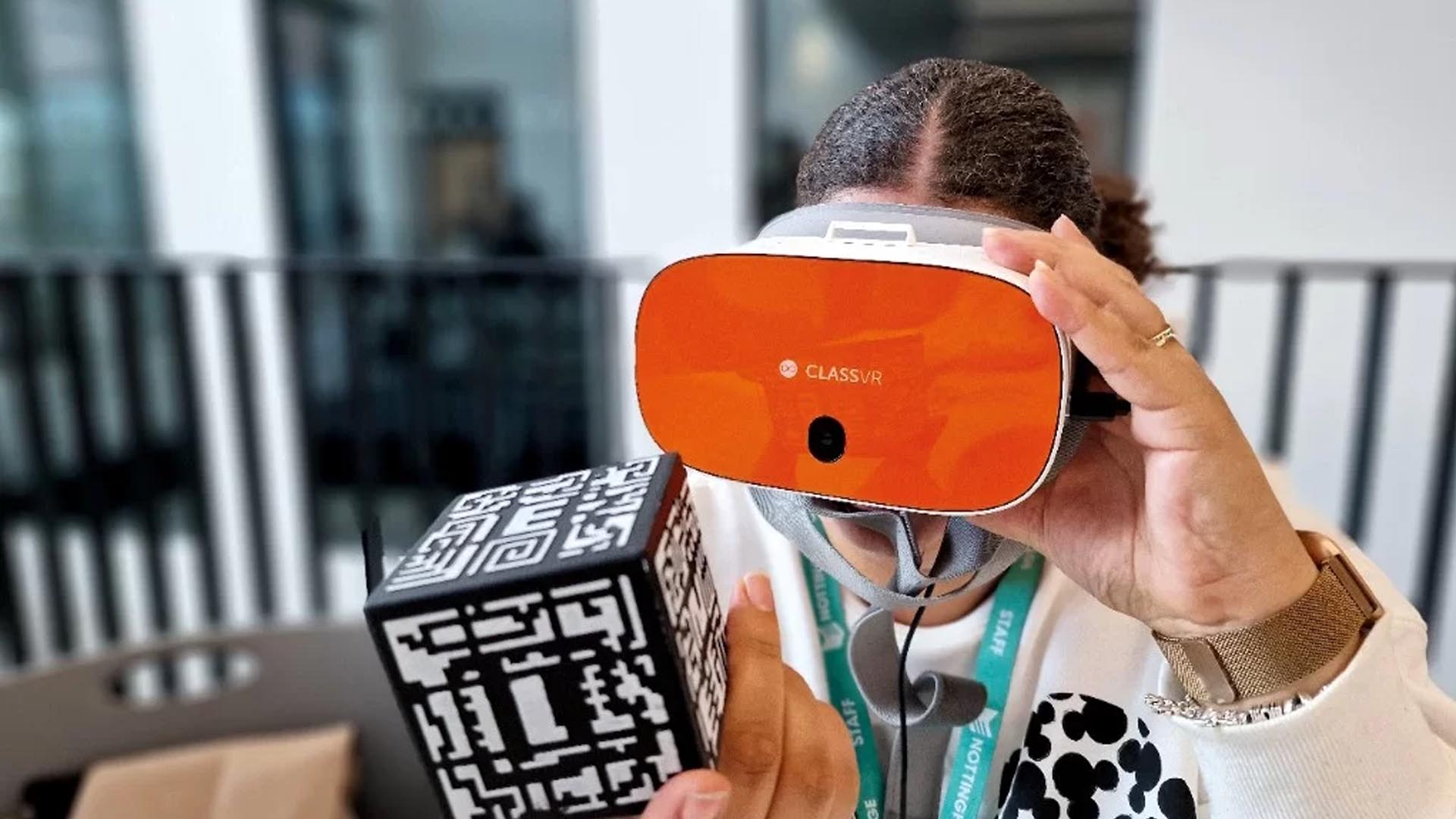
So, how can you integrate augmented reality into your STEM lab? Although the technology here is advanced and transformative, the principles for integrating it follow the sound pedagogical practices that teachers already know. We run through some of the basics below:
Setting goals
As always in education, it’s key to start with learning goals that connect with the curriculum. While it’s amazing for an individual lesson to be exciting and intellectually stimulating, ideally it should fit within a larger context of the applicable curricular aims and other lessons that are planned. That way, students can make connections between their learning in this activity and other activities before and after. Goal setting can be a little more complex in STEM labs because sometimes students may set some of their own targets. However, the ultimate learning objectives should still tie back to the curriculum. Students might set smaller goals that are milestones toward the larger, fixed goal.
For example, let’s say the goal is for students to be able to calculate moments using the formula: Moment = Force x distance from pivot.
Students might have the freedom to design in AR and then create a 3D-printed object of their choice that includes a pivot. They might then be required to demonstrate how the pivot on the object works and how the moment around the pivot can be calculated. In this case, students might be able to decide on the goals of:
- What object they will create – for example, a mini seesaw or toy crocodile with a hinged jaw
- How they will demonstrate the pivot and the moment involved
But the overall goal of understanding moments and calculating them using the formula is predetermined.
Training and expectations
Another general good principle of education is that students need to be set up for success. This means that two things are important:
- Training
- Expectations
In other words, students need to know how to use a tool – they need to be trained. And they need to know how they ought to behave when using the tool – they need to understand expectations.
It’s relevant to note that when students don’t fully understand how to use a tool, they’re more likely to be disengaged from the task or come to dislike it. Students love being effective and competent, so good training in using AR and related tools is a great first step to success.
Behavioral expectations can also help to create the climate of scientific collaboration and discovery that’s ideal in STEM labs. Students need to feel empowered to make some of their own decisions independently, but they also need to be aware of what behavior isn’t appropriate with using AR. And that brings us to our next point, which is …
Responsibility and autonomy
Group work and project-based work are skills like any other. Students who aren’t used to working in groups, or who aren’t used to working in a more autonomous manner, may need help and preparation to succeed. That’s true for all STEM lab work, but even more true for work with AR, which may be confusing because it’s new to students.
If students are new to STEM labs or AR, gradually ramping up their autonomy and responsibility is a great idea. They can start with small tasks and then gradually work up to lessons in which they take charge of their own AR projects and work more self-directedly.
Students may also need reassurance if they’re used to a model of learning in which they only follow instructions. They may need to be taught metacognition, which means the ability to self-reflect and self-assess. How much do they feel they know?
While social-emotional skills like metacognition, autonomy, and teamwork aren’t a part of STEM, they are vital for success in future life – which is just another reason why STEM labs can be so valuable.
Assessments
Creating good assessments is an art. In some cases, AR makes this task easier – although not always.
Firstly, it goes without saying that STEM labs with AR are not the ideal venues to use formative or summative assessments in the form of paper quizzes and tests. Formative assessments may be easiest to make through observation, as a teacher walks through the STEM lab and checks on students’ understanding and progress. Before the project begins, teachers should also think about what they’ll do if the formative assessment suggests that the plan needs tweaks as it goes along – such as if students are stuck on a certain aspect of the task and need more help.
On the other hand, project-based learning is likely to create products that can be used for summative assessment, which can make assessment easier and more natural than a paper test. The key here is to ensure that the activities and the assessment address the same skills and match up appropriately. To use our previous example about the object with a pivot, the rubric for grading the object should focus on the subject of the lesson – moments and how to calculate them – and students should know what they’ll be graded on and what to aim for.
Sometimes, students creating physical objects, such as those designed in AR and then 3D-printed, can focus too much on whether the object looks good or ‘cool’. If the summative assessment rubric doesn’t focus on these traits, it’s best to ensure students understand that.
Examples of integrating AR in STEM labs
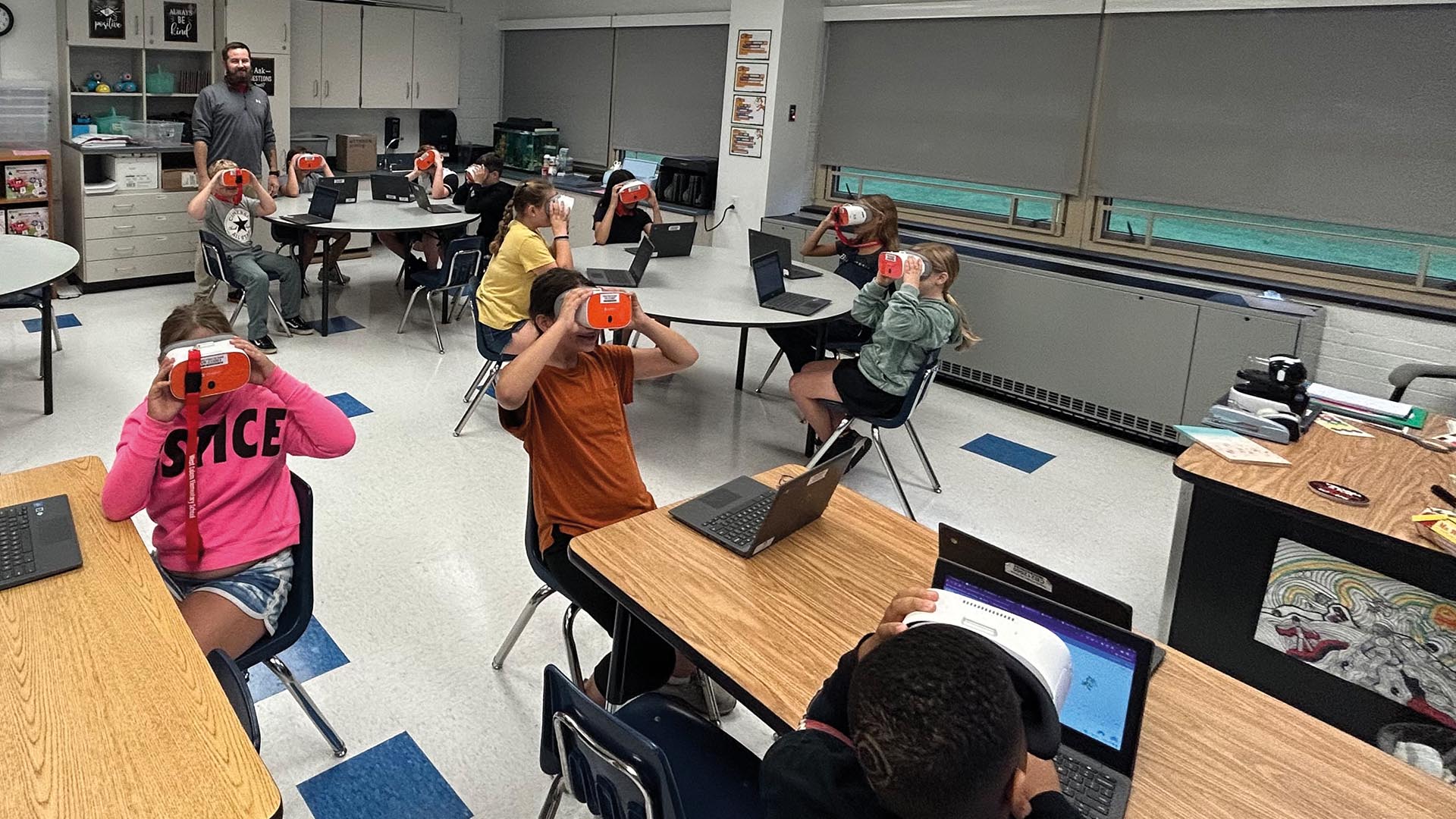
We’ve already discussed a few examples of how augmented reality might be used in STEM lab activities. As we’ve mentioned, STEM labs are often multidisciplinary, so other activities may not strictly belong to just one category of science, technology, engineering, or mathematics. However, here are some other examples, just to provide a sense of what AR in STEM labs could do.
Science
Holding molecules in your hand is great – and it’s also a great precursor to a STEM lab based around virtually modelling molecules. Drawing on students’ knowledge of how given atoms can create bonds, they could be challenged to create molecules and then investigate what they’ve created. Does this molecule exist in real life? What are its properties?
Technology and engineering
It’s not exactly practical to bring a train into a lab in real life. With AR, however, students can hold trains and car engines and examine how they work. This might be a great part of a lab in which students are challenged with the problem of transporting a certain weight of goods across a landscape. What is the most fuel-efficient method? What method uses the fewest other resources? What are the arguments for using a train, and how might your train be constructed – will it run on steam or electricity?
Mathematics
What’s more fascinating than fractals? These intricate creations are hard to perceive fully in images, but far easier to understand when you hold one in the palm of your hand. Students could use the fractal concept to explore mathematical ideas like infinity, ratios, scale, shape, and volume. They could also blend STEM with the arts to create beautiful fractals of their own as they learn.
AR enhances student motivation and enthusiasm for STEM subjects by making learning more interactive, engaging, and fun. The immersive nature of AR experiences can inspire curiosity and a passion for exploration among students.
Taking AR in STEM labs even further
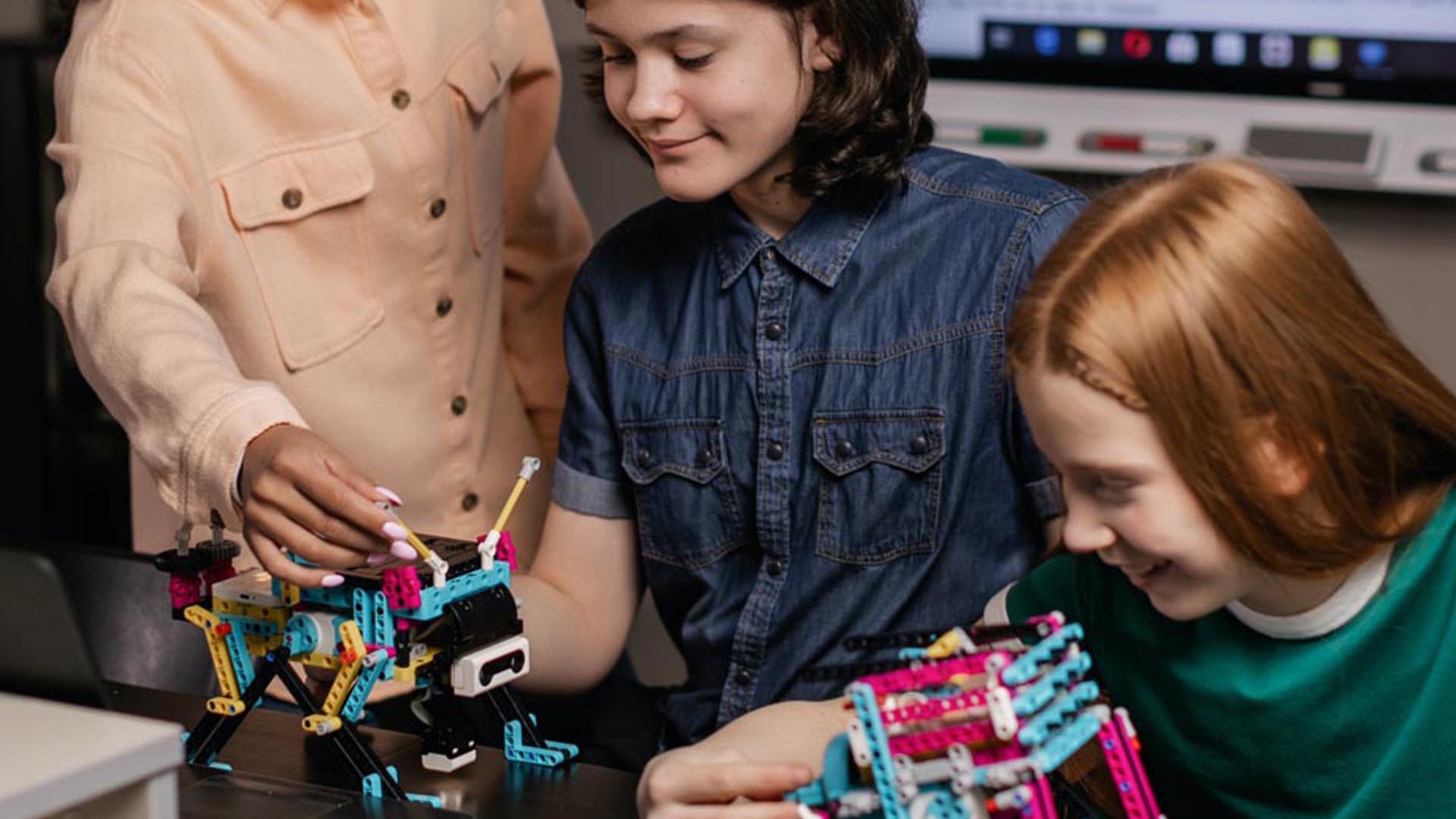
While the innovation and energy of STEM labs is undeniable, it’s likely that students will still return to a traditional classroom at times. To amplify the effects of STEM labs and AR even more, teachers can ask themselves how STEM lab work can support and be supported by work in the traditional classroom.
One connection to make relates to students’ independence and autonomy in learning. If students are accustomed to a more passive learning style, STEM lab teachers can collaborate with classroom teachers to increase students’ skills in autonomy and critical thinking in all school settings, whether in the STEM lab or elsewhere. Likewise, project-based learning is an educational mode that can be implemented to some extent in the classroom, although perhaps not as fully as in the STEM lab.
Overall, we are only seeing the very beginning of the journey of augmented reality in education. The future is likely to bring even more possibilities – more virtual objects and more ways in which objects created virtually through AR can be made real. Students who have become accustomed to using AR in STEM labs now are likely to be better prepared to use augmented reality in the future – as well as possessing STEM and social-emotional skills that prepare them well for the workplace and a lifetime of using technology. In short, if you’re integrating AR into your STEM lab now, you’re giving your students a great start.
